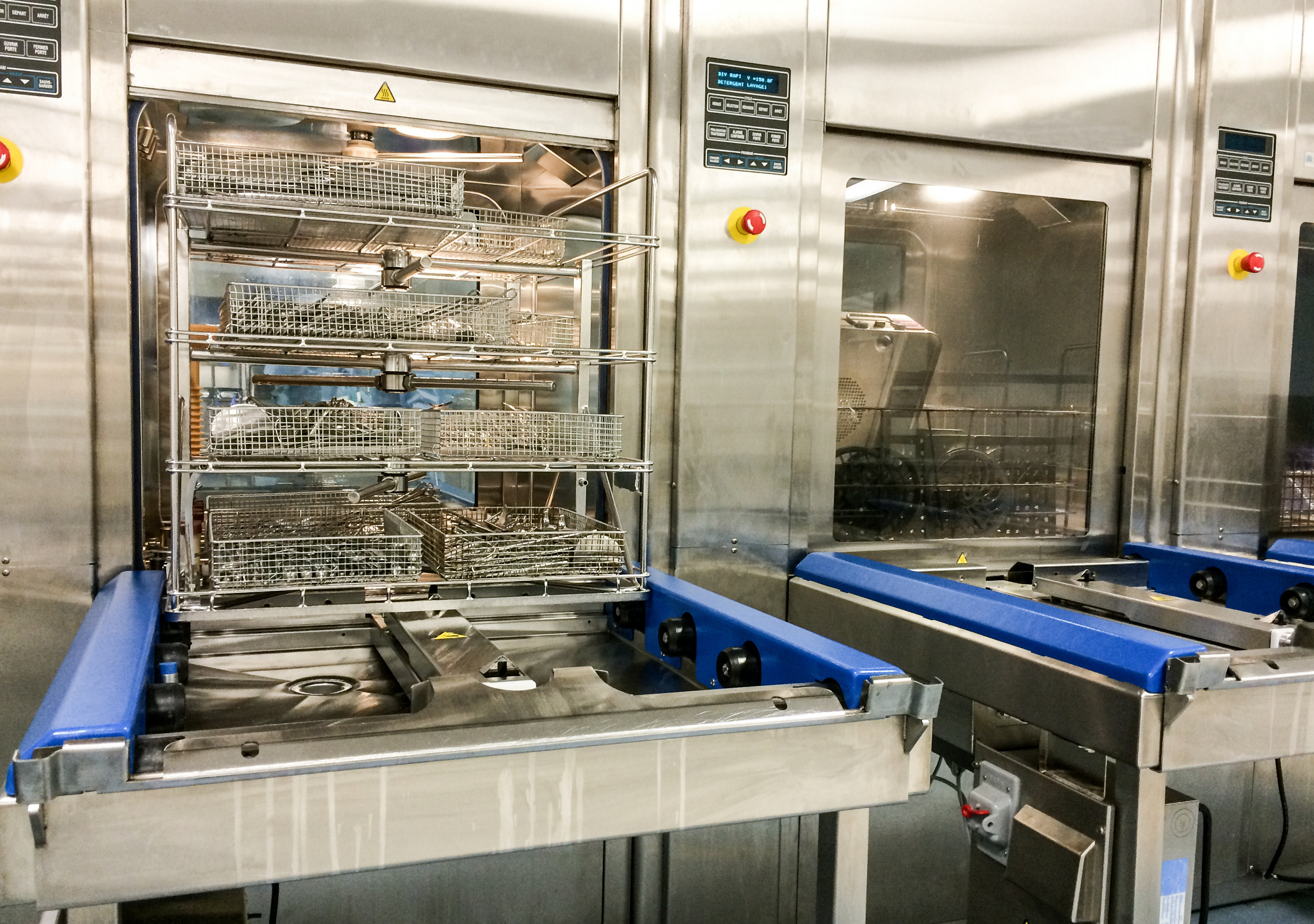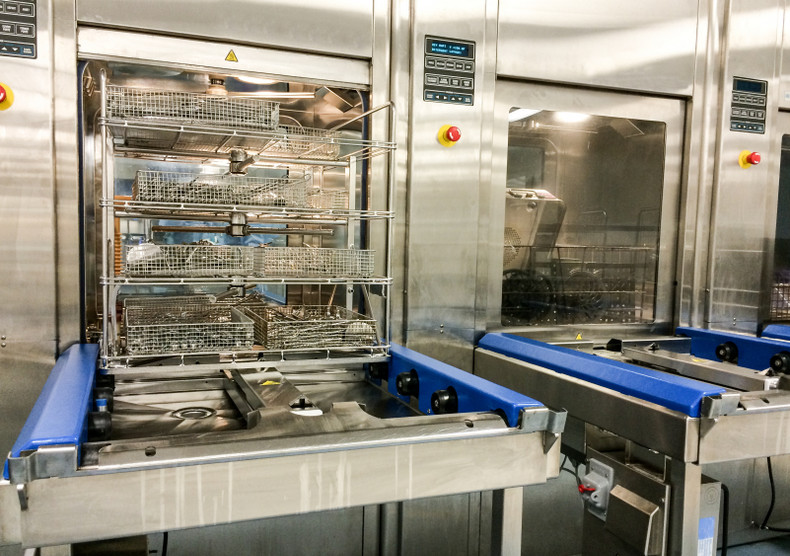
Last month we discussed the effect of water on instrumentation and today we are providing you with a couple of quick troubleshooting guides to help you assess the situation of your instruments.
First and
foremost, if staining is identified on instrumentation, perform a water quality
analysis. One of the most
prevalent reason for staining is poor water quality. Some staining is a result
of poor processes, as the
operating room staff may allow bioburden to dry on the instruments by failing
to apply a pre-enzyme, and not
transporting the case cart to the decontamination area promptly.
It can also be
due to poor cleaning
habits in the decontamination area. Some items, we should note, have design
issues and make the item
difficult to clean. If corrosion,
pitting, and rusting are identified, the SP and O.R. leaders should assess
processes at all touchpoints of
the instruments, evaluating whether items are handled in a manner that may
cause damage and if
the point of use and transportation is causing issues. During the point of use, intraoperative
care, and handling of instruments, the leaders should identify if saline or
iodine are being utilized
on instruments.
The next steps to assess are to determine if the detergents and
enzymes used are
according to the Manufacturer's Instructions for Use (MIFU), and to test the
quality of the water,
specifically the pH levels. During the
sterilization process, the touchpoints of instrumentation allow for quality
checks. If stainless steel items are
identified with a gold-brown discoloration, assess if there is excessive
heating applied to stainless steel
surfaces. Possible causes would be either a superheated load in a steam
sterilizer or steam
temperatures above the MIFU recommendations of the instrument manufacturer.
Troubleshooting Guide
Commonly due to chromium oxide, technicians may identify rainbow discoloration. If an orange brown discoloration is noticed, a phosphate layer is indicated. It develops on the surface and is usually due to poor water quality and lack of rinsing the instrument appropriately. If a black-purple stain is identified, it is commonly from steam sterilization and is caused by a high/low pH in Critical Water. These colors can also be from water quality and insufficient rinsing with low acidic or high alkaline chemistries. Often assessed in department audits are white chalky spotting or green/red discoloration and are a quick identifier for the water hardness in steam sterilization. This causes a buildup over time and is due to either copper and iron chemical contaminants and/or inadequate rinsing.
Water Analysis
Water analysis results will determine the following contributors of unacceptable organic and inorganic levels and their effects on instrumentation. When we assess data for the quality of the water, either utility or critical, there are many factors to consider:
Bacteria
“The final water product is produced in the water treatment system. If the Critical Water is tested at this point, it should be bacteria-free. From the final product in the reservoir tank, the water is transported to the decontamination areas through pipes. These pipes can produce and harbor different bacteria. The acceptable level provided in TIR 34 has been defined as 10 cfu/mL.”
Endotoxins
“Only Critical Water used in the final rinse, in either manual or mechanical wash, is derived by a process that would be expected to remove endotoxins. Although RO treatment should eliminate endotoxins, some might be detected because of the passage of the water through tubing that is not endotoxin-free. If the final rinse of a medical device is done with Critical Water containing less than 10 EU/mL, the number of endotoxins left on the device is expected to be only a fraction of that amount. The device, in this case, would have far less than 20 EU remaining on its surface. Tap water or softened water is produced by a process that does not remove endotoxins, so utility (tap) water is not to be used for the final rinse of critical devices. But if endotoxins are not detected within the recommended level, deionized water can be used to rinse critical devices.”
Total organic carbon (TOC)
“Only the process of creating Critical Water removes microorganisms and organic materials. Yet, softened or deionized water would be expected to have total organic carbon levels that are no worse than tap water; therefore, the TOC value for both water categories have been defined as less than 1.0 mg/mL.”
pH (Power of Hydrogen)
Levels of pH denote the alkalinity or acidity of water. The scale runs from 0 to 14, and the neutral point is 7. Numbers below 7.0 indicate acidity, and those above 7.0 indicate alkalinity. For all rinse stages, including the thermal rinse, a pH level near neutral (6-8) is usually indicated. “Water that is either too acidic or too alkaline can cause corrosion, pitting, rusting, stress cracking, loss of color of items (rigid containers), and black or purple staining. In addition, it can interfere with the efficacy of detergents and disinfectants. Tap water is expected to have a pH in the range of 6.5 to 8.5.”
Water hardness
“Utility water is given a level of CaCO3 (Calcium Carbonate) higher than 150 ppm because tap water is generally considered “hard.” Ensuring the water hardness is less than the acceptable value helps the efficacy of the detergents used in manual or mechanical wash cycles and reduces the risk of hard-water deposits during reprocessing. If the water hardness is corrected by softened water, the value of the water is 10 mg/L. The critical water process should remove solutes and produce a calcium carbonate level of less than 1 ppm.” As we inspect the instruments at quality inspection points during the sterile processing steps, SP Technicians should ensure hard-water spots are absent or removed from the instrument. Specifically, the three points of inspection to verify that spotting is absent are at the manual sink, after the mechanical wash cycle is complete, and during the assembly of the instrument package.
Ionic contaminants
An ion is an atom or molecule with a net electric charge due to the loss or gain of one or more electrons. The ionic content of water is indicated directly by the measured concentration of the individual ions and indirectly by the measured resistivity of the water. Resistivity is the ability of water to resist the flow of electricity. Ionic contaminants (iron, chloride, copper, and manganese) in water used in medical device reprocessing can corrode devices. “The critical water process removes these ionic contaminants and recommends a value of these ions in AAMI TIR 34 as chloride and iron less than 0.2 mg/L and copper and manganese is less than 0.1 mg/L. Assuring these levels are achieved by testing water at the final product tank will minimize the risk of corrosion. To help the Sterile Processing Department troubleshoot staining and corrosion identified on processed instrumentation, water should have low levels of chloride, iron, copper, and manganese as well.”
Watercolor
“The color of the water can easily be tested by the SP staff. Tap water is expected to be colorless and clear and contains no residues.’
In Closing
AAMI and others provide us the tools to come to our rescue. Learning the sciences of sterilization, aids our ability to troubleshoot issues within our department. Together with Bioseal, we should all jump into the water, headfirst. Diving into the sciences of sterilization will help us all to serve our patients well.
Resources:
ANSI/AAMI ST79:2010/(R)2014 Comprehensive guide to steam sterilization and sterility assurance in health care facilities
AAMI TIR34: 2014/(R)2017 Technical Information Report: Water for the reprocessing of medical devices

